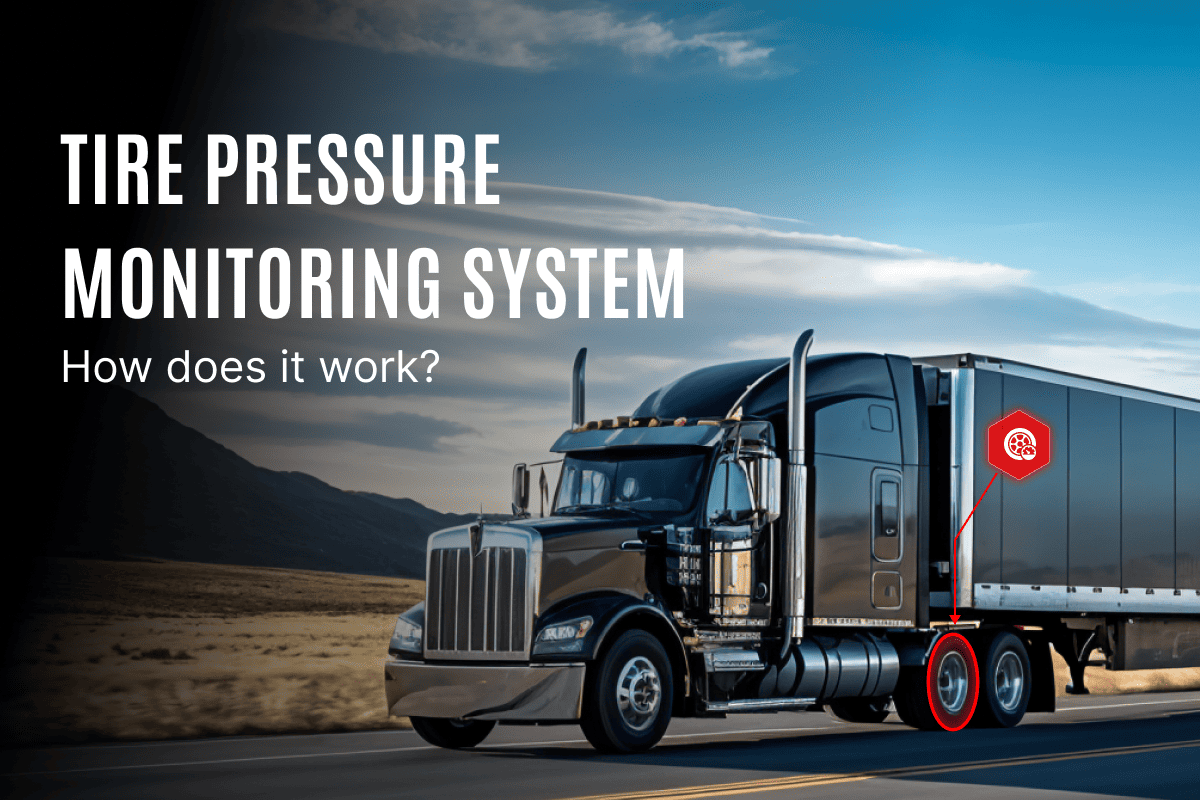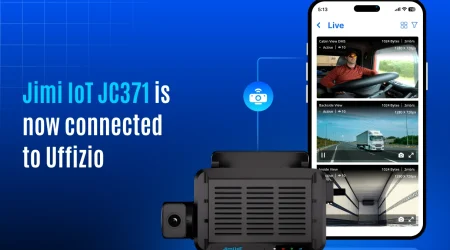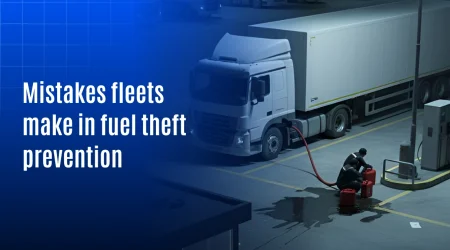What is a Tire Pressure Monitoring System (TPMS) and how does it work?

The easiest way to keep an eye on your tires
Vehicles rely heavily on tires as an essential component. A well-lit fleet truck or personal car will reap smoother rides, save on fuel, and ensure safety. But checking the tire pressure monitoring system manually is time-consuming and often neglected.
TPMS is the solution for this particular case. What does it do? Maintaining tire health is made easier for drivers and fleet managers through the continuous monitoring of this system’s tire pressure and temperature, eliminating the need for guesswork. The best part? Real-time alerts are sent before a minor tire issue escalates into an ongoing problem.
It is essential to comprehend why TPMS is not just a tool for vehicles and fleets. Let’s break it down further.
Why is the Tire Pressure Monitoring System (TPMS) important?
Consider a scenario where you’re on the road, and suddenly, your vehicle’s tire bursts. This could have been prevented if you knew beforehand that the tire pressure was too low. Under-inflated tires cause more friction to happen, which leads to overheating and, in the worst cases, even a tire failure.
A Tire Pressure Monitoring System eliminates this risk by continuously checking tire pressure and sending alerts if something is wrong. It helps in multiple ways:
- Prevents tire blowouts
- Increases fuel efficiency
- Reduces maintenance costs
- Improve overall vehicle safety
For fleet operators, this fleet management system is even more beneficial. With multiple vehicles to manage, manually checking each tire isn’t practical. TPMS allows fleet managers to remotely monitor all vehicle tires from a single dashboard, ensuring efficiency and fewer breakdowns.
How does a Tire Pressure Monitoring System work?
TPMS consists of advanced sensors installed in every tire. Pressure and temperature data are measured by these sensors, which are then fed into the TPMS software. Then, the processed data is represented in the form of widgets on a dashboard, in reports, or through mobile app alerts. Let’s see how this system works:
- The pressure and temperature of the tire are continuously monitored by an internal sensor.
- Wireless communication of data to the TPMS software is possible.
- If pressure decreases or temperature increases, an alert is issued.
- Once notified, fleet managers or drivers take action upon receiving the notification.
No more unforeseen tire issues, only proactive maintenance!
Key features of our TPMS software
Tire monitoring is simplified by the use of TPMS software. The TPMS can be monitored along with the location tracking of the vehicle through the software itself. Let’s know more about it.
Real-time monitoring
Tire issues can happen at any time. It’s vital to have live monitoring of such events. By utilizing real-time updates on tire pressure and temperature, the manager can take certain decisions and take actions accordingly. With the software, you can quickly detect and prevent any problems with the tires.
Cost savings & reduced downtime
The occurrence of unexpected tire wear leads to costly repairs and vehicle failure. Can this challenge be resolved efficiently? Reminders can be used to schedule tire maintenance ahead of time. This helps you save money while keeping your vehicles in good condition.
Improved fuel efficiency
Driving with under-inflated tires can reduce fuel efficiency by up to 3%. With the TPMS system, the tires will always be at the precise pressure needed, saving fuel and mileage over time. Also, a modern fuel management system can further enhance tracking and optimizing fuel usage for better performance and cost savings.
Temperature & pressure warning alerts
When tires are exposed to high temperatures, the rubber can weaken, increasing the risk of a blowout. If the tires overheat or the pressure drops below the system’s set limits, alerts are triggered, allowing the user to take timely and appropriate action.
Graphical analytics for better insights
We go beyond just alerts. By offering accurate analytics and reporting, our system empowers fleet managers to monitor trends in tire performance and optimize maintenance schedules through automated fleet management.
Enhanced vehicle safety
The proper maintenance of tires can minimize accidents, as well as ensure the safety of both the driver and vehicle. TPMS’s ability to prevent sudden tire failures makes road travel safer for everyone.
How to maintain the Tire Pressure Monitoring System for best performance?
To use the TPMS feature optimally, follow these simple steps:
Check Tire Pressure Regularly– Even with TPMS, it’s good practice to inspect tires manually once in a while.
Keep Sensors Clean – Dust and dirt can interfere with sensor readings. Ensure they stay clean for accurate monitoring.
Reset the TPMS after maintenance if a tire is replaced or rotated, and reset the TPMS to ensure it syncs correctly with the new setup.
Follow Manufacturer Guidelines – Each vehicle has specific TPMS settings. Check the user manual for proper configuration.
By following these steps, you can ensure that your TPMS always works accurately and helps you maintain tire health efficiently.
Why choose our Tire Pressure Monitoring Software?
There are many TPMS solutions in the market, but our fleet-focused TPMS software offers features tailored to business needs. It includes widgets on the dashboard and live tracking screen. Different reports give you proper insights about TPMS, using which a manager can make decisions. The software offers the advantage of being usable on both web and mobile devices, making it easy for users to access. This helps in managing the tire health better and overall brings productivity.
By choosing TPMS software, you’re not just monitoring tire pressure; you’re ensuring long-term fleet efficiency and safety.
Final thoughts: Smarter Tire Management with TPMS
Keeping your tires in good shape doesn’t have to be a hassle. With a Tire Pressure Monitoring System (TPMS), you get real-time updates, instant alerts, and easy-to-understand insights that help you stay ahead of tire issues. No more unexpected blowouts, no more wasted fuel, just smoother rides, safer journeys, and a healthier fleet.
Whether you’re managing a few vehicles or an entire fleet, TPMS makes tire care simple and stress-free. It’s all about saving money, reducing downtime, and keeping your vehicles running at their best.



